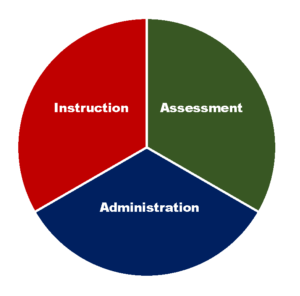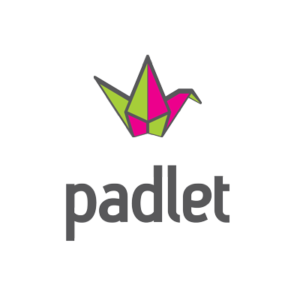Multi-Tiered System of Support 2020 Style

“Working on this project was very powerful for our team. It helped us to look at our program with a fresh perspective, improve our instructional delivery and design for our specific learners, and gave us a focus during a very challenging and truthfully difficult school year.”
Team Fairfax HSE Pathway
by Trista Mason
| Team Members | Project Summary: |
|---|---|
|
What is a Multi-Tiered System of Support and why do we need one for our learners? Our project consisted of designing, building, and implementing a Multi-Tiered System of Support for our Fairfax County adult learners in a virtual setting. |
Where we started…
Fairfax County Adult High School (FCAHS), the only adult high school in the state of Virginia and one of only a handful in the country, offers two pathways to a credential. The first is the diploma program which models K-12 best practices and earning a traditional diploma. The second is the high school equivalency (HSE) pathway where if someone needs more than eight credits to graduate from a traditional program, they are diverted to the HSE pathway. Three years ago, our school and programs were restructured and we have been building (or rebuilding) the HSE pathway since that time. We have been working on our program and instructional design while building an amazing staff of professionals to elevate our program and our students’ success. Nearing the end of the 2019-2020 school year (pre-pandemic), we finally were in a place where we could dig deep into our program and really evaluate what was working and what was not. Then COVID-19 hit and we didn’t finish our school year in person. There was no end of the year CASAS and GED® testing and our very robust program, which had grown exponentially over the past two school years, had a dramatic drop in enrollment for the fall semester as the pandemic took over our daily lives and brought such uncertainty to our learners.
In figuring out how to deal with our new reality, our first focus was on instruction. We knew we needed a way to make class time, which was now virtual, impactful. Our diploma side has an embedded Multi-Tiered System of Support (MTSS) that guides staff work and interventions. It has very specific features and components that help the Student Services Team support all diploma students on a tiered scale. Unfortunately, the HSE pathway is not a part of the MTSS at FCAHS for a variety of reasons and factors. We knew as a professional learning community (PLC) that we needed an MTSS system of our own but didn’t know where to start or how to make it work in an adult education setting. This is our journey in developing a Multi-Tiered System of Support for Fairfax County’s HSE program. We hope by sharing our successes and challenges along the way, we can help guide other programs through a similar process.
Our team consisted of myself, Trista Mason, Administrator of the HSE Pathway; Meghean Rustia, Instructional Specialist; Danielle Van Vlack, Assessment Specialist; and Mary Mikulski, Resource Teacher. As a collaborative learning team (CLT), we decided that we would need a three-prong approach to creating our project, implementing it successfully, and tracking the results.

Multi-Tiered System of Support
Our Multi-Tiered System of Support focused primarily in SY20-21 on delivering quality Tier 1 and Tier 2 interventions to HSE pathway students.
-
- Tier 1 support is actions that we take for all students at all levels in all classes.
- Tier 2 is targeted interventions supported by DATA.
What did this look like?
- Creation of a database that can securely house learner information, testing information, and attendance tracking.
- Creation of a referral form for teachers to refer students about whom they are concerned.
- Track attendance, GED® Ready scores, CASAS testing, and record in MTSS database for data-driven instruction, outreach, and retention efforts.
- Weekly CLT meetings to look at data and make informed decisions about the program or individual learners in real time.
- Meet bi-weekly with resource teachers to align instruction between day and evening programming.
- Hiring of a resource teacher for evening program in mathematics.
- Hiring of a Career Coach.
- Provide Vertical Articulation professional development for staff and establish collaborative learning team(s).
Where do we go from here?
Working on this project was very powerful for our team. It helped us to look at our program with a fresh perspective, improve our instructional delivery and design for our specific learners, and gave us a focus during a very challenging and truthfully difficult school year. As we are moving forward, our Assessment Specialist has accepted a promotion outside of our district and we are currently looking for someone for this critical position. As a program, we decided that literacy will be our focus across the levels next year and two of our resource teachers are putting together a pacing guide for us to use in the fall. This will guide our work next year as we implement our Tier 3 interventions and the next phase of our MTSS journey.
Learn more about Team Fairfax HSE Pathway’s strategy and see the questions that guided their AE&L Conference ReMix Team Challenge project.
What is MTSS?
Video from the Massachusetts Department of Education, What is MTSS?
What is Multi-Tiered System of Support? A Comprehensive Guide to MTSS
 We are including some of the comments received for each showcase team. View more of the showcase discussion in the 2020 AE&L Conference ReMix TeamShowcase Padlet.
We are including some of the comments received for each showcase team. View more of the showcase discussion in the 2020 AE&L Conference ReMix TeamShowcase Padlet.
“I have similar challenges with gathering the data needed to “figure out the story” behind the data.”
“I was inspired by the focus on the students – individualized support!”
“I was inspired by the multiple tiers of support program. Especially for Adult Education programs that offer Workforce Development courses, those tiers of resources and education intervention would be great anywhere!”
 Trista Houghton Mason, M.A., M.Ed., is a lifelong resident of Virginia and a product of Fairfax County Public Schools K-12. She is currently the Assistant Administrator at Fairfax County Adult High School in Springfield, Virginia primarily overseeing the High School Equivalency Grants Program as well as serving as Assistant Principal for the school as a whole. Her instructional experience spans Pre-K to postsecondary and she has leadership experience in managing departments, pathways, and programs both inside FCPS and out. She also serves as an adjunct professor at Northern Virginia Community College in Alexandria, Virginia.
Trista Houghton Mason, M.A., M.Ed., is a lifelong resident of Virginia and a product of Fairfax County Public Schools K-12. She is currently the Assistant Administrator at Fairfax County Adult High School in Springfield, Virginia primarily overseeing the High School Equivalency Grants Program as well as serving as Assistant Principal for the school as a whole. Her instructional experience spans Pre-K to postsecondary and she has leadership experience in managing departments, pathways, and programs both inside FCPS and out. She also serves as an adjunct professor at Northern Virginia Community College in Alexandria, Virginia.